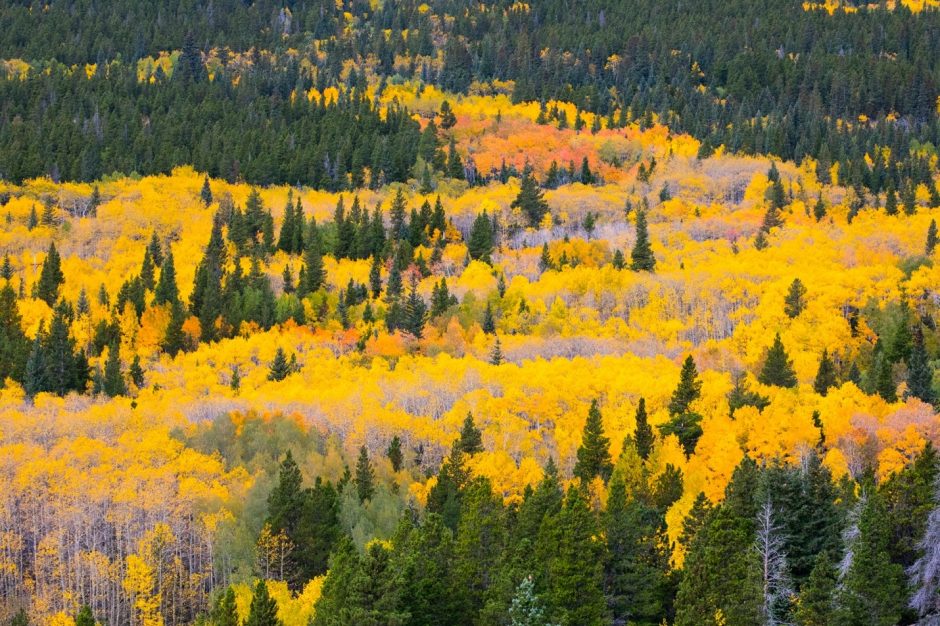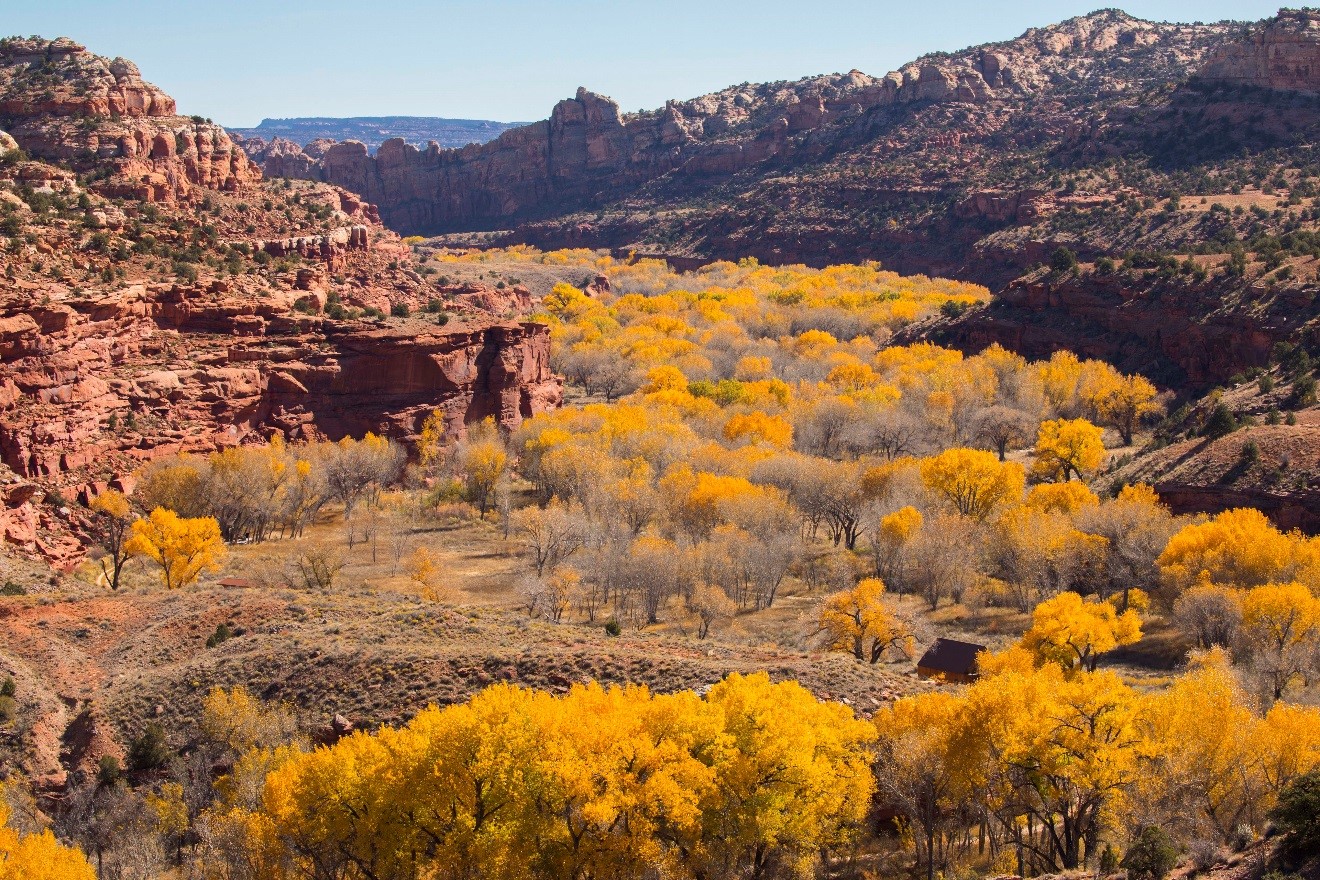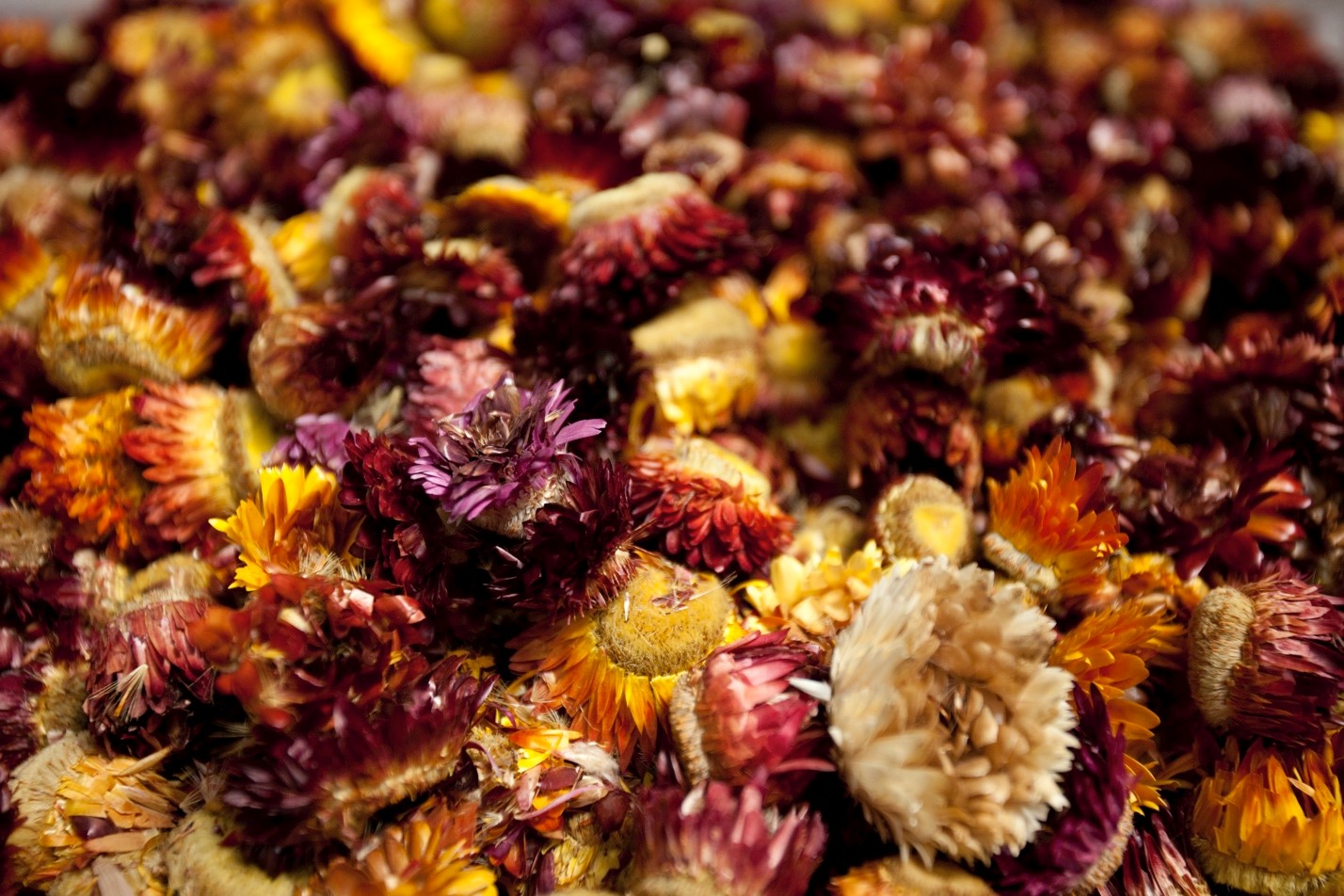
Gearing up for a Colorful Fall
Writing from my home in Boulder, Colorado, I can tell you fall is in the air. While we might be getting a bit of a preview of what’s to come, no doubt the entire country will be enveloped in the wonders of fall in a few short weeks. This goes for fall temperatures, fall light, and of course fall colors.
If you haven’t had a chance to get the full overview of my recommendations for fall foliage photography, you can check out my hour-long webinar here, where I detail everything I consider, from photo shoot planning, my choice gear, and favorite shots and techniques.
Photographing Fall Foliage Webinar
However, I also want to distill this down into my three biggest takeaways for making the most of your fall foliage photography.
#1 – Don’t Leave the Zoom Lens at Home

It’s natural to think that big landscapes and big beauty means that you should try to capture it all. However, landscape photography doesn’t mean you must use a wide-angle lens for a big field of view. In fact, one of my favorite techniques is to scan my landscape and pick out smaller, specific areas that have particularly good color, lighting, or something striking.
Fall foliage photography is ripe with examples of this, and ripe with opportunity. When I’m out photographing fall, my 100-400mm telephoto lens gets even more use than my 24-105mm wide-angle. I find that trying to get the entire scene often results in too many bright spots (highlights), too many shadows, and difficult composition when, say, photographing from a roadside.
Force yourself to see the scene with your telephoto, and you’ll get some impressive results–promise.
#2 – Get Creative with Composition

When leaves and branches are your only real elements to the photo, you need to get creative with how you compose them. Be deliberate in choosing where each exposed trunk fits into your frame…where the sky is (if any at all), and if you can incorporate any supporting elements like other prominent landscape features (mountains, cliffs, etc.). If none of those exist, even man-made things like fences or other strong objects help balance the photo out.

#3 – Round Out your Album with Other Fall Images
Fall foliage is the obvious star when it comes to fall photography. However, there is so, so much more to photograph at this iconic time of year. From farm stands, to colorful corn husks, to dried seasonal flowers, there is no shortage of things to turn into beautiful photographs. We have the luxury today of sharing albums of photos easily, and curating such an album of, say, 10 or 15 photos means that a dozen photos straight of yellow leaves can be a little lack luster for your audience. Think about variety not just in subject material, but also styles of photography (e.g., try mixing in some macro photography of leaves, seasonal treats, etc.)
Prior to heading out for your day of fall photography, create a shot list of things you think would be interesting to shoot to complement your album. From pumpkin patches to pumpkin lattes, fall photo fodder abounds!

Once again, if you wish to continue to my webinar on fall photography, take a look HERE. I hope you have a fantastic fall season, and happy photographing out there!
Cheers, and be well,

Court
2 Comments

Greg Boreham
September 3, 2020 at 12:22 pm

Court Whelan, Ph.D.
September 3, 2020 at 2:08 pm
Hey Court,
Thanks for putting this webinar together with so much useful information. The SmokyMountains.com has the 2020 fall foliage map online now. This was perfect timing as we’re about to take our trailer out for a 7+week camping trip to follow the fall colors. From LA we’re heading up to Crater Lake to camp with our son and his fiancee for a couple of nights. Then off to Montana, ND, MN, WI then PA to camp with our youngest son. Hoping to get into NY for the Finger Lakes and Adirondacks but state parks are closed to CA residents. Our return will take us through the Appalachian and Great Smoky Mountains then the south west. Keep up the great work on your webinars and hopefully we’ll be able to travel together sometime soon. Cheers, Greg
Hi Greg, so glad to hear about the timing! And what a fantastic trip you’ve got in store. I can’t wait to see what you snap out there–you should get some really fantastic opportunities! Looking forward to seeing your fall 2020 album!!